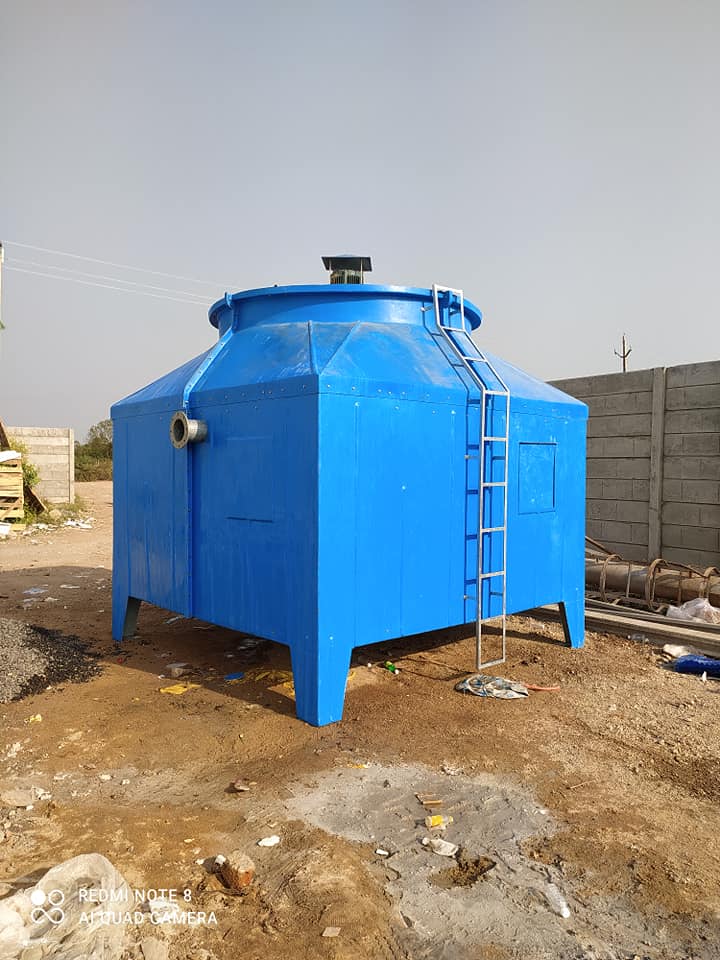list of cleaning chemicals used for cooling tower descaling, disinfection, and maintenance, categorized by their function:
1. Descaling Chemicals (Mineral Deposit Removal)
These remove limescale, calcium, and other hard deposits.
| Chemical | Best For | Notes |
| Hydrochloric Acid (HCl) | Calcium carbonate (CaCO₃) scale | Highly effective but corrosive; requires inhibitors. |
| Sulfamic Acid | Mild to moderate scale | Safer than HCl, less fumes. |
| Citric Acid | Light scale, eco-friendly option | Non-toxic, biodegradable. |
| Phosphoric Acid | Rust & mild scale | Less aggressive, also acts as a passivator. |
| Acetic Acid (Vinegar) | Light deposits (small-scale cleaning) | Weak acid, safe for minor cleaning. |
| EDTA-Based Cleaners | Chelates calcium, magnesium, iron | Non-acidic, gentle on metals. |
| Sulfuric Acid (H₂SO₄) | Heavy scale (rarely used) | Very aggressive; risk of corrosion. |
2. Alkaline Cleaners (Organic & Grease Removal)
Used before acid cleaning to remove oils, sludge, and biofilms.
| Chemical | Best For | Notes |
| Sodium Hydroxide (NaOH) | Organic deposits, biofilms | Highly caustic, requires careful handling. |
| Potassium Hydroxide (KOH) | Similar to NaOH, slightly safer | Used in some biodegradable cleaners. |
| Sodium Carbonate (Soda Ash) | Mild alkaline cleaning | Weak base, used for pH adjustment. |
| Surfactant-Based Cleaners | Oil, grease, and dirt removal | Often combined with alkaline solutions. |
3. Biocides & Disinfectants (Microbial Control)
Prevent algae, bacteria (e.g., Legionella), and biofilm growth.
| Chemical | Type | Notes |
| Chlorine (Bleach, NaOCl) | Oxidizing biocide | Cheap, effective but corrosive. |
| Bromine (NaBr + oxidizer) | More stable than chlorine | Works in higher pH ranges. |
| Chlorine Dioxide (ClO₂) | Strong oxidizer, biofilm control | More expensive but effective. |
| Isothiazolinones | Non-oxidizing biocide | Long-lasting, low corrosion. |
| Quaternary Ammonium (Quats) | Algae & bacteria control | Foaming can be an issue. |
| Glutaraldehyde | Broad-spectrum biocide | Used in industrial systems. |
| Hydrogen Peroxide (H₂O₂) | Eco-friendly oxidizer | Breaks down into water & oxygen. |
4. Corrosion Inhibitors (Post-Cleaning Protection)
Applied after descaling to protect metal surfaces.
| Chemical | Best For | Notes |
| Sodium Silicate | Mild steel protection | Forms a protective layer. |
| Phosphates (Zinc Orthophosphate) | Corrosion & scale inhibition | Common in water treatment. |
| Molybdate-Based | Non-toxic, eco-friendly option | Used in closed loops. |
| Azoles (BTA, TTA) | Copper & brass protection | Prevents dezincification. |
5. Neutralizers (Post-Acid Cleaning)
Used to neutralize residual acids before disposal.
| Chemical | Notes |
| Sodium Bicarbonate (Baking Soda) | Safe, raises pH. |
| Sodium Hydroxide (NaOH) | Strong neutralizer (caustic). |
| Ammonia (NH₃) | Rarely used due to fumes. |
6. Specialty & Eco-Friendly Cleaners
| Chemical | Notes |
| Bio-Enzymatic Cleaners | Breaks down organics naturally. |
| Polyaspartic Acid | Green descaling alternative. |
| Ozone (O₃) Treatment | Chemical-free disinfection (requires generator). |
Safety & Handling Tips:
◉ Always follow SDS (Safety Data Sheet) guidelines.
◉ Use PPE (gloves, goggles, respirator for acids/chlorine).
◉ Never mix acids and chlorine (produces toxic gases).
◉ Neutralize wastewater before disposal. Would you like recommendations for specific brands or a step-by-step chemical cleaning procedure?
